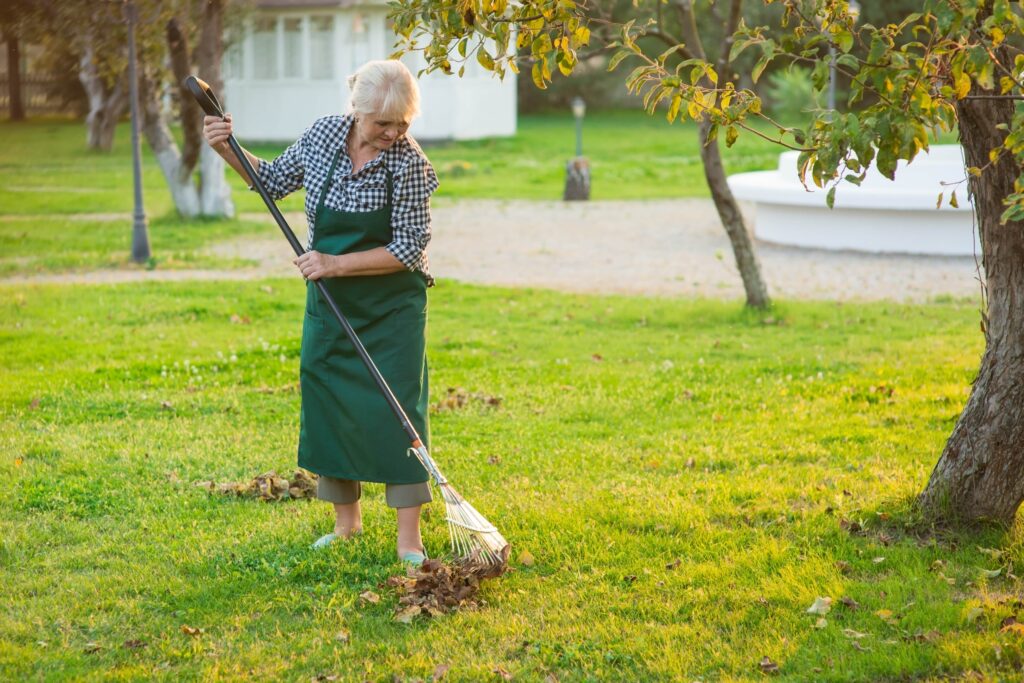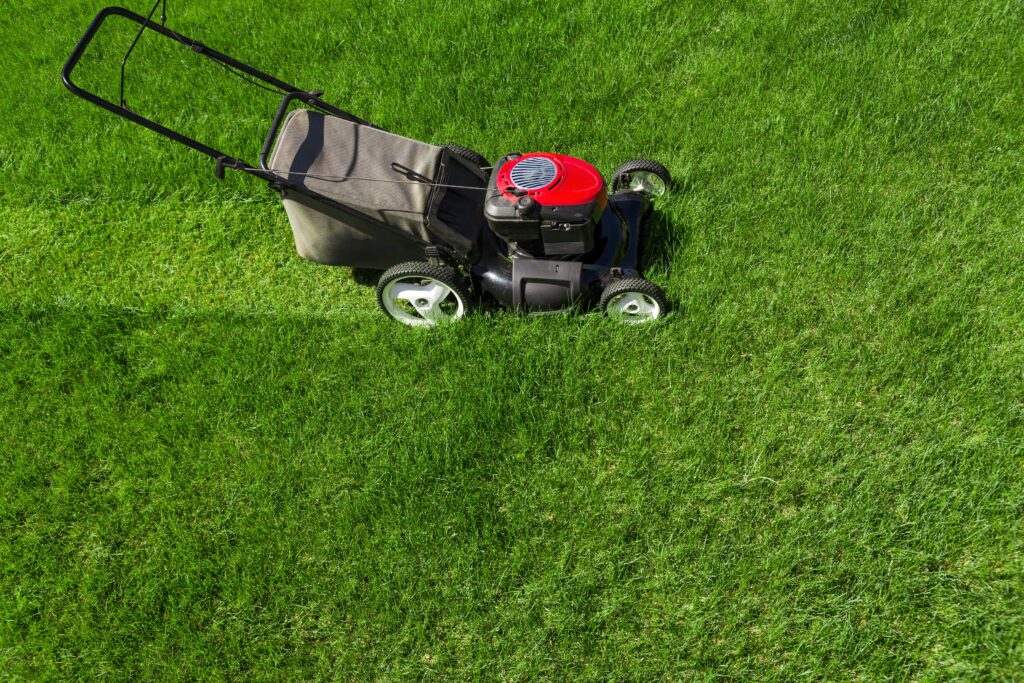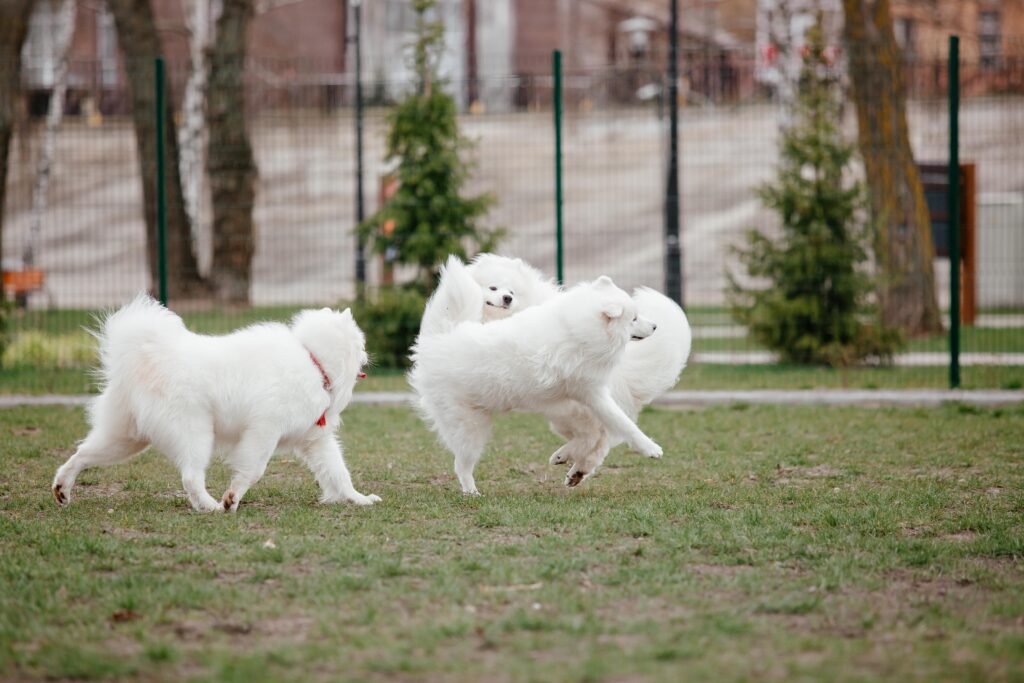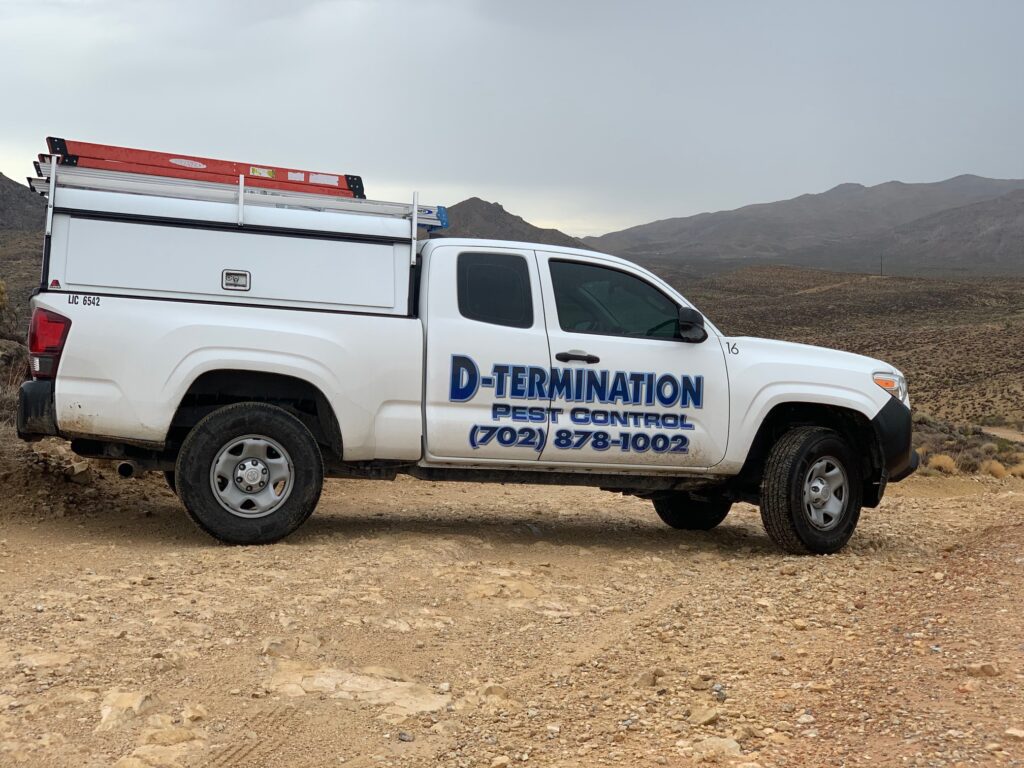When it comes to keeping your yard a haven of tranquility and beauty, there is one unwelcome guest that can quickly turn the tables – fleas. These minuscule pests may measure just half an inch in size, but they have the potential to wreak havoc on your outdoor space and even find their way into your home. That’s why it’s crucial to understand the importance of eliminating fleas from your yard and adopting a comprehensive approach to flea control.
A Brief Overview of the Importance of Eliminating Fleas from Your Yard

Fleas may be tiny, but their impact can be significant. These blood-sucking parasites infest not only our beloved pets but also our yards, creating an environment that is uncomfortable for both humans and animals alike. Beyond causing incessant itching and discomfort, fleas can transmit diseases such as tapeworms and typhus.
Furthermore, if left unchecked, a flea infestation in your yard can quickly escalate into a full-blown infestation inside your home. Flea eggs are often laid in shady areas, such as under trees or decks, which makes it much easier for these resilient creatures to hop onto unsuspecting animals or humans passing by.
The Importance of a Comprehensive Approach to Flea Control
Effective flea control requires more than just treating your pets with flea shampoo or randomly spraying insecticides around the yard. To truly eliminate fleas from your yard and prevent them from returning, it’s essential to adopt a comprehensive approach. This means addressing all aspects of flea prevention and eradication simultaneously.
From clearing cluttered areas where fleas love to hide and breed to regularly inspecting pets for any signs of infestation – every step counts in keeping these pesky critters at bay. It’s also important to avoid overwatering your yard, as fleas thrive in moist environments.
Additionally, consider incorporating natural methods into your flea control regimen, such as using beneficial nematodes or food-grade diatomaceous earth. By taking a comprehensive approach, you can eliminate fleas from your yard and ensure a harmonious outdoor space for yourself, your family, and your pets.
Understanding Fleas
Ah, fleas! These minuscule yet mighty creatures have plagued pets and homes for ages. To effectively get rid of fleas and your yard of these persistent pests, it’s crucial to understand their peculiar life cycle.
Fleas fall under the Siphonaptera order, a group of small, wingless insects that feed on the blood of mammals and birds. While they may seem like insignificant nuisances, fleas possess fascinating adaptations that enable them to survive in various environments.
The Circle of Flea Life
A flea’s life cycle is both interesting and maddeningly efficient. From egg to adult, their journey involves four distinct stages: egg, larva, pupa, and adult.
Female fleas lay eggs on their hosts (typically pets), which then drop into the surrounding environment—your yard being one such destination. These tiny white eggs hatch into larvae within two days and begin seeking out dark crevices to avoid direct sunlight.
Larvae feed on organic material like flea feces and skin debris before transitioning into pupae after about a week. Within a cocoon spun from silk-like material secreted by all the fleas and larvae themselves, pupae undergo metamorphosis over several days or weeks—an unpredictable period dependent on favorable environmental conditions.
Emerging as adults with powerful jumping capabilities, fleas have but one goal: finding a warm-blooded host such as your furry companions (or even you!). Once they’ve feasted on blood—often causing considerable irritation—they’re ready to mate within 24 hours and start laying eggs again.
Telltale Signs of Infestation
Detecting a flea infestation in your yard can save you and your pets from unnecessary discomfort or health complications. Though preventing infestations is always ideal (we’ll delve into that shortly), recognizing the signs is equally essential.
Keep an eye out for the following indications: 1. Scratching frenzy: If your pets display excessive scratching, biting, or licking, fleas may be the culprits. These incessant itch-inducers love to hide in fur and can cause considerable irritation.
2. Flea dirt: Flea feces, commonly referred to as flea dirt, resembles tiny black specks and often accumulates around pet resting areas or in areas with high flea activity.
3. Red bumps or rashes: Flea bites can provoke allergic reactions in some pets, resulting in redness, bumps, or even open sores.
4. Presence of stray animals: Stray cats or dogs frequenting your yard might inadvertently introduce fleas into the area. Keep an eye out for these furry visitors and take preventive measures accordingly. Understanding the fascinating life cycle of fleas and recognizing signs of infestation are crucial steps towards effective flea control in your yard.
Armed with this knowledge, you’ll be better equipped to implement preventive measures and embark on a successful battle against these persistent pests. Stay tuned for our upcoming sections on preparation and prevention methods to keep those jumping critters at bay!
Preparation and Prevention
Clearing clutter and debris in your yard to reduce flea hiding spots

When it comes to preventing fleas from taking over your yard, cleanliness is key.
Fleas love hiding in cluttered areas, so take the time to clear out any debris that might create cozy homes for these pesky parasites. Remove fallen leaves, branches, and discarded items that could provide perfect hiding spots for fleas.
Be thorough in your cleaning efforts, paying special attention to dark corners, under shrubs, and along fence lines where fleas tend to thrive. Dispose of the collected debris properly to ensure you don’t unintentionally introduce fleas back into your yard.
Regularly mowing the lawn to discourage flea breeding grounds

Maintaining a well-groomed lawn is not only visually pleasing but also plays a crucial role in preventing fleas from infesting your yard. Keeping the grass at an optimal height can significantly deter flea breeding grounds.
Aim for a grass length of about three inches or less since taller grass provides an attractive environment for fleas and other pests. Regular mowing also helps expose flea larvae and eggs to sunlight, drying them out and reducing their chances of survival.
Creating physical barriers like fences or gravel borders to keep out wild animals carrying fleas
Wild animals like raccoons, squirrels, or stray cats can unknowingly bring fleas into our yards. To minimize the risk of such unwanted guests bringing along their tiny hitchhikers, consider creating physical barriers around your property.
Installing fences can help restrict access and dissuade these animals from entering your yard altogether. Opt for fences with small gaps or mesh netting to prevent smaller animals from squeezing through.
Another effective option is creating gravel borders around the perimeter of your yard. Fleas find it challenging to traverse such terrain, providing an added layer of defense against potential infestations.
Remember, prevention is the first step in tackling a flea problem. By clearing clutter, regularly mowing your lawn, and creating physical barriers, you’re taking proactive measures to keep fleas at bay and safeguarding your yard from these bothersome pests.
Note: It’s important to consider using protective clothing if you decide to use insecticides or other chemicals in your yard. Always follow the instructions provided by the manufacturer when using any product containing chemicals and be mindful of their potential risks.
Natural Remedies for Flea Control
Introducing Beneficial Nematodes: Nature’s Little Warriors
One effective and eco-friendly way to combat fleas in your yard is by introducing beneficial nematodes. These microscopic worms are like nature’s little warriors, as they actively hunt down and get fleas and feed on flea larvae. Simply sprinkle the nematodes onto your yard, focusing on areas where fleas love to hide, such as shady spots or under shrubs.
They will diligently seek out flea larvae in the soil, effectively reducing their flea population without harming other beneficial insects or pets. It’s a natural and harmless solution to tackle those pesky fleas!
Diatomaceous Earth: The Safe Insecticide

Another natural remedy for flea control is diatomaceous earth (DE). This fine powder, made from fossilized algae, acts as a safe insecticide against fleas. When sprinkled on your yard, DE penetrates the exoskeleton of adult fleas and dries them out, preventing their survival.
It’s important to use food-grade diatomaceous earth specifically designed for pest control purposes since it is completely harmless to humans and animals when used correctly. Remember to evenly distribute the powder across your yard and reapply after rain or heavy watering.
Flea-Repellent Herbs: Nature’s Fragrant Defense
Nature can provide us with many powerful tools for flea control, including certain herbs that naturally repel these pesky insects. Planting herbs like lavender, rosemary, or mint in your yard acts as a fragrant defense against fleas. Fleas naturally don’t appreciate the strong aroma these plants emit and tend to avoid them altogether.
Consider strategically placing these herbs near areas where pets often frequent or where you’ve noticed high levels of flea activity—such as around dog houses or play areas. Not only will your yard smell wonderfully fragrant, but it will also help keep fleas at bay.
Additional Tips for Natural Flea Control
While nematodes, diatomaceous earth, and flea-repellent herbs are effective natural remedies for flea control, it’s important to supplement these methods with other preventive measures. Keep your pets’ sleeping areas clean by regularly washing their bedding and vacuuming the surrounding indoor areas near entrances. Fleas love cozy spots and can easily be transported inside on your pet’s fur.
Additionally, remove any potential flea hiding spots in your yard by clearing clutter and debris, as well as trimming tall grass and bushes. Remember that natural remedies may take some time to show results, so consistency is key when using these methods.
Monitoring your yard for any signs of reinfestation is essential to stay on top of flea control. By combining these natural remedies with a comprehensive approach to both flea treatment and prevention, you can create a comfortable and pest-free environment for both you and your beloved pets in the yard all year round!
Chemical Treatments for Flea Control (Use with Caution)
Overview of Different Chemical Options Available for Treating Yards with Fleas
When it comes to eliminating fleas from your yard, sometimes chemical treatments are necessary to achieve effective control. There are several options available, but it’s important to use them cautiously and adhere to the instructions provided by the manufacturer. Chemical treatments can be helpful in severe infestations or situations where natural remedies may not suffice.
Insecticides Specifically Formulated for Outdoor Use
Outdoor insecticides are a popular choice for flea control as they are specifically designed for treating yards. These products contain ingredients that target fleas and their larvae, effectively reducing their population.
Make sure to choose an insecticide labeled for outdoor use and follow the application instructions carefully. Apply the insecticide evenly throughout your yard, paying extra attention to shady areas where fleas tend to thrive.
Insect Growth Regulators (IGRs) that Disrupt the Flea Life Cycle
Insect growth regulators (IGRs) provide an alternative approach to chemical flea control by targeting the reproductive cycle of fleas. IGRs contain chemicals that interfere with flea development, preventing them from reaching adulthood and reproducing.
These products come in various forms such as sprays or granules and can be applied directly to your yard. IGRs are particularly useful in killing fleas and stopping future flea infestations as they break the life cycle of these pesky parasites.
Foggers or Sprays for Immediate Control in Severe Infestations
In severe infestations where immediate control is necessary, foggers spray or sprays can be effective tools. Foggers release a mist of insecticide into the air, covering a large area and reaching hidden corners where fleas may hide. On the other hand, sprays allow for targeted application, allowing you to treat specific areas or objects where fleas are present.
Both foggers and sprays provide quick knockdown of adult fleas, offering immediate relief from the infestation. However, be sure to evacuate pets and family members during application and follow the safety instructions provided.
Consultation with a Professional Exterminator if Necessary
If your pet food flea infestation persists despite your best efforts or if you prefer professional assistance, consulting with a licensed exterminator is recommended. Professional exterminators have access to specialized tools and expertise in dealing with fleas effectively. They can evaluate your yard’s unique situation and recommend the most appropriate treatment plan based on its size, severity of infestation, and other factors.
Remember that hiring a professional can save you time, effort, and potentially prevent further damage caused by the fleas in the yard. By understanding these chemical treatments for flea control and using them cautiously when necessary, you can tackle even the most challenging flea infestations in your yard.
Whether it’s outdoor insecticides formulated specifically for lawns, insect growth regulators that disrupt the flea life cycle, foggers or sprays for severe infestations, or seeking professional help when needed; there are options available to help combat fleas in your yard effectively. Remember to always read product labels thoroughly and follow safety guidelines to protect yourself, your loved ones, and any pets that may roam freely in your lawn care outdoor space.
Maintaining a Flea-Free Yard

Regularly inspecting pets for fleas and treating them promptly
When it comes to keeping your yard flea-free, one of the most crucial steps is to regularly inspect your furry companions for any signs of these pesky critters. Don’t worry, you don’t need a magnifying glass or detective skills for this task!
Simply take some time each week to thoroughly check your pets’ fur, paying close attention to areas like the neck, behind the ears, and around the base of the tail. If you notice any tiny black specks or notice your pet scratching excessively, it may be an indication of a flea infestation.
Upon discovering fleas on your pet, it’s essential to take immediate action. There are various options available such as flea shampoos, topical treatments, or oral medications that effectively kill fleas and prevent reinfestation.
Consult with your veterinarian to choose the most suitable method based on your pet’s age, breed, and overall health. Remember that addressing the problem kills fleas at its source by treating your pets is vital in preventing fleas from multiplying in both their fur and your yard.
Consistently cleaning pet bedding and vacuuming indoor areas near entrances
To maintain a flea-free yard, you must not neglect indoor areas where fleas can sneak in. Start by regularly washing all pet bedding using hot water as high temperatures can kill adult and fleas inside, as well as their eggs. Additionally, vacuuming is an excellent way to eliminate any lurking adult fleas or eggs that might have made their way indoors.
Pay special attention to areas near entrances where pets come and go frequently. While vacuuming carpets and rugs effectively removes adult fleas and their eggs from indoor spaces near entrances, don’t overlook other potential hiding spots such as upholstered furniture or curtains.
Give these areas a good vacuuming as well. After you finish, be sure to promptly dispose of the vacuum bag in a sealed plastic bag and throw it away outside your home to prevent any escapees from reinfesting your indoor space.
Conducting routine inspections of the yard for any signs of reinfestation
Even after you’ve successfully eliminated fleas from your yard, it’s essential to remain vigilant and conduct routine inspections to prevent any future flea problems. Keep an eye out for signs like flea dirt (tiny black specks), excessive scratching in pets, or even the presence of stray animals that may introduce new fleas into your yard. Inspect shady areas where fleas tend to thrive, such as under trees or along fences.
If you notice any potential hotspots, consider treating those areas with natural remedies like cedar mulch or diatomaceous earth. These substances are safe for pets and humans but can be highly toxic to fleas and other insects.
By regularly inspecting your pets, cleaning their bedding diligently, and conducting routine inspections of your yard for signs of reinfestation, you’ll significantly reduce the chances of experiencing another flea infestation in both indoor and outdoor areas. Remember that consistency is key when it comes to maintaining a flea-free environment for you and your beloved pets!
Conclusion
Eliminating fleas from your yard requires a comprehensive approach that involves both prevention and treatment methods. By clearing clutter, regularly maintaining your lawn, using natural remedies like beneficial nematodes or diatomaceous earth, and considering chemical treatments when necessary, you can significantly reduce flea populations in your yard. Remember to regularly inspect your pets for fleas, clean their bedding, and conduct routine inspections of the yard to further prevent fleas reinfestation.
Although getting rid of fleas can be challenging, with diligence and consistency, you can successfully create a flea-free environment for both your family and furry friends. Take pride in knowing that by following these steps, you are providing a safe and comfortable space for your pets to enjoy without the nuisance of fleas.
Keep in mind that prevention is key – maintaining a clean yard attracts fleas, and implementing preventive measures will greatly minimize the risk of fleas returning. So go ahead and reclaim your yard from those pesky pests!
Say farewell to fleas with D-Termination, the top pest control provider in Las Vegas!

If you’re grappling with a flea issue at your Las Vegas property, rest assured that D-Termination is at your service. Our team of experts excels at eradicating flea infestations, ensuring your space is once again comfortable and peaceful. Make the choice for effective pest control today and choose D-Termination to bid adieu to fleas!
For bookings, contact us at 702-919-6310 or visit dtermination.com to reclaim your property from these pesky pests.
Frequently Asked Questions:
Fleas in your yard can be killed using various methods like flea sprays, nematodes, or diatomaceous earth.
The best homemade flea killer for your yard is a mixture of water, dish soap, and vinegar, which can be used as a natural flea spray.
Yard flea infestations can occur due to pets carrying fleas, wildlife, or other environmental factors.
Dawn dish soap can kill fleas in the yard by breaking down their waxy outer layer, causing dehydration and death.








